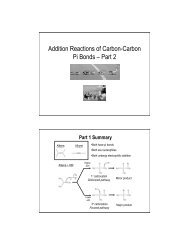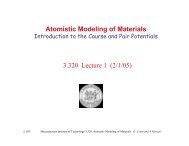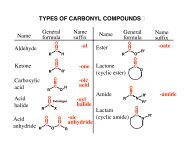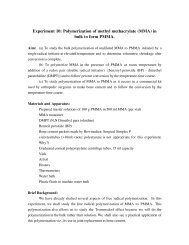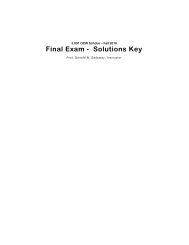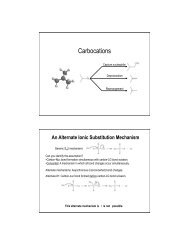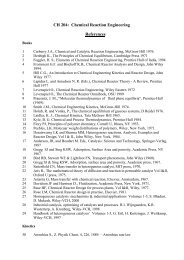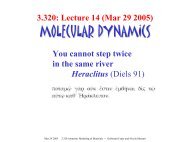5.74 Introductory Quantum Mechanics II - MIT OpenCourseWare
5.74 Introductory Quantum Mechanics II - MIT OpenCourseWare
5.74 Introductory Quantum Mechanics II - MIT OpenCourseWare
You also want an ePaper? Increase the reach of your titles
YUMPU automatically turns print PDFs into web optimized ePapers that Google loves.
p. 10-25rephasing.” Analysis of R 1and R 3reveals that these terms are non-rephasing and rephasing,respectively.phase acquiredφ0−iωba τ1eτ 1−iω ba τ 3eτ 3+iωba τ3enon-rephasingrephasingP()tt 1 t 2t 3tFor the present case of a third-order spectroscopy applied to a two-level system, weobserve that the two rephasing functions R 2and R 3have the same emission frequency andwavevector, and would therefore both contribute equally to a given detection geometry. The twoterms differ in which population state they propagate during the τ 2 variable. Similarly, the nonrephasingfunctions R 1and R 4each have the same emission frequency and wavevector, but differby the τ 2 population. For transitions between more than two system states, these terms could beseparated by frequency or wavevector (see appendix). Since the rephasing pair R 2and R 3bothcontribute equally to a signal scattered in the −k + k +k1 2 3direction, they are also referred to asS I . The nonrephasing pair R1and R4both scatter in the + k1 − k2+k3direction and are labeled asS <strong>II</strong> .Our findings for the four independent correlation functions are summarized below.S IS <strong>II</strong>rephasingnon-rephasingωsigR2ω1ω2ω3R3ω1ω2ω3R1ω1ω2ω3R4ω1ω2ω3ksigτ 2 population− + + − k1+ k2+ k3excited state− + + − k1+ k2+ k3ground state+ − + + k1 − k2+ k3ground state+ − + + k1 − k2+ k3excited state



